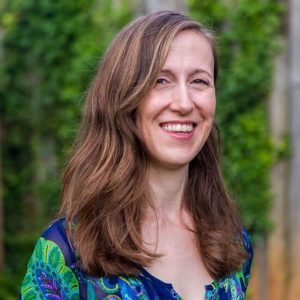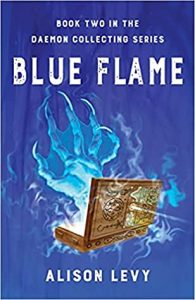On Writing Characters
 Writing, like all art, is an act of creation and creation begins in the mind of the creator. My characters begin “life” as thoughts which I then expand upon bit by bit, layering personality and history onto them until I feel they are whole enough to have their own thoughts. It’s like a seed growing into a tall, lovely tree that eventually is capable of sprouting its own seeds. I need to hear my characters’ thoughts and voices clearly before I can write them convincingly.
Writing, like all art, is an act of creation and creation begins in the mind of the creator. My characters begin “life” as thoughts which I then expand upon bit by bit, layering personality and history onto them until I feel they are whole enough to have their own thoughts. It’s like a seed growing into a tall, lovely tree that eventually is capable of sprouting its own seeds. I need to hear my characters’ thoughts and voices clearly before I can write them convincingly.
But while they take on a life of their own, they are still a part of me. I can give them life, so to speak, but they can never live independently of me. For that reason, I’m skeptical that I could ever write a character without some hint of myself coming through.
I think it would be impossible to create something entirely outside of my own life and experiences. My mind is the only place where I can create my characters—I can’t borrow someone else’s—and my mind IS me. Even when I research something entirely new to me for use in a story, that information still comes to me through my senses and is catalogued into my brain. Absolutely everything I learn is filtered through my thoughts and thus is tinted by my life experiences. I could spend a lifetime constructing a wildly alien character yet that character would still be a product of me.
Below, I’ve described a bit of my writing process with three of my main characters from The Daemon Collecting Series. They are very different from one another but each holds of piece of me at their core.
Rachel Wilde is a brazen young woman who’s foul-mouthed and uninterested in what others think of her. She often acts impulsively and when confronted she’s far more likely to react with anger than fear. In other words, she is not at all like me. I am too plagued with anxiety to be unaffected by societal pressures and I worry constantly that people dislike me. I could never be the sort of person who, like Rachel, stands her ground when challenged but that doesn’t mean there’s nothing of me in her. I wrote Rachel’s personality as a sort of wish-fulfillment—she is how I imagine I might have been without my anxiety, without concern for the opinions of others, and without the restrictions of a patriarchal society. I long to be a person who doesn’t feel the need to apologize just for taking up space. Rachel gives me an outlet for that longing.
Since Rachel is from another dimension, I could invent any background and culture I liked for her and her people. I didn’t have that luxury for the next character on his list.
Leda Morley is a career-minded woman of impressive intelligence. She is the sort of woman who knows her worth and holds her head high in all situations, a confidence I don’t share but truly envy. The close bond she shares with her family is a thing many people, like me, feel the absence of in our lives. Though I crafted her to be a stronger woman than me, some of my insecurities snuck through, including my intense dislike of showing others my emotions. Like me, Leda tends to use a smile to hide her anger or grief.
Unlike with Rachel, I’ve spent quite a lot of time doing research in order to develop Leda’s character. eda is a person of color, which I am not, and so I felt it was important for me to educate myself on topics relevant to that experience. I’ve learned a lot, and in the process, I’ve also unlearned a lot of the subtle racism I was raised with, but I can’t learn these things through first-hand experience. Anything I write from the point of view of a black American woman comes filtered through my white upbringing. Still, I have done my best to weave some of what I’ve learned into Leda in order to do her character justice.
For example, Leda has carefully cultivated her professional image over time and has taken great care not to let any cracks appear in that façade. The injuries she received in my first book cause Leda’s coworkers to ask her personal questions and to whisper behind her back when she doesn’t want to answer. Women in the workplace often have to work twice as hard to be taken as seriously as their male colleagues, black women even more so. When Leda’s control of her professional image slips, despite no change in the quality of her work, she begins to fear for her job. I will never be able to properly convey the African American experience because I haven’t lived it so I can only use the knowledge I’ve gathered to the best of my ability. I will probably make mistakes, which will help me grow and improve my writing, but I can’t grow my character in someone else’s mind.
Bach is a kind-hearted young man who has endured a great deal of hardship in his life. Like me, he has struggled with mental health issues that his family did not acknowledge; his family, like mine, is overly concerned with appearances and class acceptability. Bach’s mental health problems are caused by his ability to see the future and not, like me, anxiety and depression, but in designing him as a character, my experiences came through. In the second book, I also deal with Bach being handed some considerable authority, which he is unprepared to wield. I’ve never been given so much power but Bach’s reaction to it feels very much in line with how I feel whenever I’m in charge of something, no matter how trivial: disbelief, frozen with terror, and only coming to terms with it once it’s been pushed on me.
In writing Bach, I faced the difficulty of writing from the point of view of a man. I’d wager that everyone has read a book at some point where it was painfully obvious that the writer didn’t know how to write an opposite-sex character. I’ve done my best, through reading and research, to avoid that pitfall, however in Bach I had the added challenge of writing a LGBTQ+ character.
I didn’t bring up Bach’s sexuality in the first book—most of the focus was on Rachel—but I wanted to touch on it in the second. In the second book, I have Bach confronting a past partner and, in the aftermath, outing himself to someone he doesn’t know well. This is not something I’ve experienced so I can only rely on what I’ve learned and try to engage my own emotions in writing it. As with Leda, I will never be able to fully embody the LGBTQ+ aspect of Bach’s character so I can only push myself to learn and be a better writer.
I don’t believe it’s possible for writers to avoid putting themselves into their characters but ultimately, that may be for the best. It might be that the best fictional characters are those that are born from familiarity and truth. Those are the ones that feel the most authentic to the reader.
—
Alison Levy lives in Greensboro, North Carolina with her husband, son, and a variety of pets. When she is not writing or doing mom things, she crochets, gardens, walks her collies, and works on home improvement projects.
Her books feature female characters who are strong but flawed, making them more relatable. They stay rooted in everyday life while world-building in their fictional cultures. Intolerance of differences has become widespread in recent years. Gatekeeper encourages readers to look beyond what they consider normal and see through foreign eyes, a message that I hope will appeal to many in today’s climate.
Follow Alison Levy on social media:
Facebook | Twitter | Instagram
BLUE FLAME
 While introducing Leda Morley, last of an ancient line of gatekeepers, to the ins and outs of her daemon-collecting work, Rachel Wilde encounters something far more dangerous than any daemon: a young boy who stands alone against an unseen yet terrifying enemy that has invaded his home—an inhuman creature who, hellbent on revenge for a minor slight, intends to harm the boy’s oblivious family. Meanwhile, Leda’s brother, Simon, is feeling left out of his maternal family legacy but is coping partly by helping Rachel’s friend Bach—a previously homeless man with unusual mental abilities—get his life back on track.
While introducing Leda Morley, last of an ancient line of gatekeepers, to the ins and outs of her daemon-collecting work, Rachel Wilde encounters something far more dangerous than any daemon: a young boy who stands alone against an unseen yet terrifying enemy that has invaded his home—an inhuman creature who, hellbent on revenge for a minor slight, intends to harm the boy’s oblivious family. Meanwhile, Leda’s brother, Simon, is feeling left out of his maternal family legacy but is coping partly by helping Rachel’s friend Bach—a previously homeless man with unusual mental abilities—get his life back on track.
In the midst of all of this, Bach unintentionally but serendipitously makes contact with a capable otherworldly being who, with great reluctance, agrees to help Bach and his friends take on the dangerous creature that’s just become their problem to solve. Together, this group of unlikely allies must put aside their differences to save an innocent child, and his family, from a monster—before it’s too late.
BUY HERE
Category: On Writing























